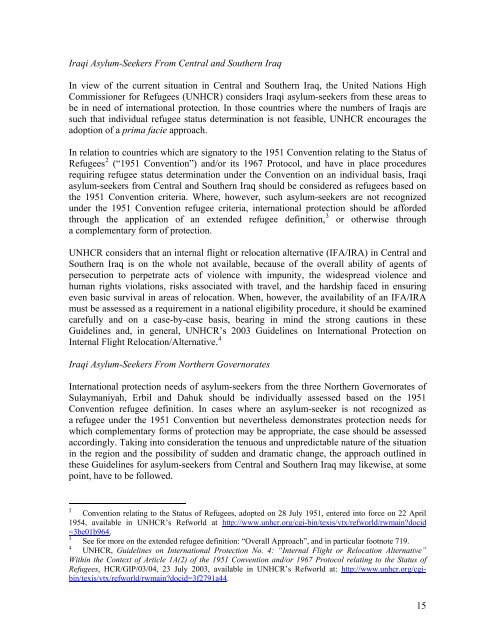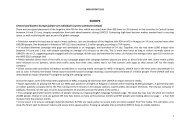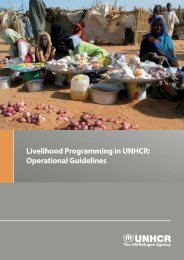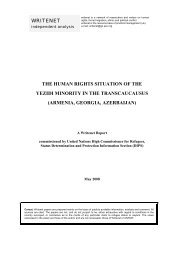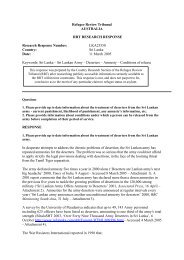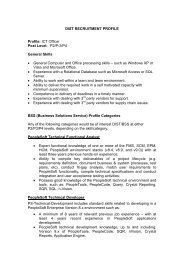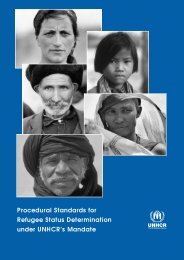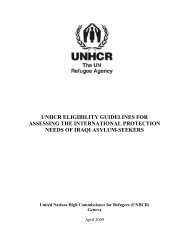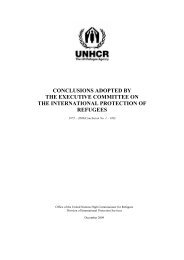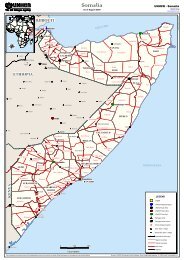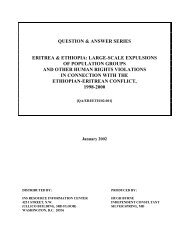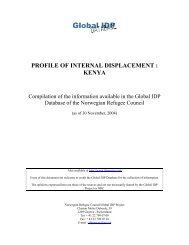UNHCR's ELIGIBILITY GUIDELINES FOR ASSESSING THE ...
UNHCR's ELIGIBILITY GUIDELINES FOR ASSESSING THE ...
UNHCR's ELIGIBILITY GUIDELINES FOR ASSESSING THE ...
You also want an ePaper? Increase the reach of your titles
YUMPU automatically turns print PDFs into web optimized ePapers that Google loves.
Iraqi Asylum-Seekers From Central and Southern Iraq<br />
In view of the current situation in Central and Southern Iraq, the United Nations High<br />
Commissioner for Refugees (UNHCR) considers Iraqi asylum-seekers from these areas to<br />
be in need of international protection. In those countries where the numbers of Iraqis are<br />
such that individual refugee status determination is not feasible, UNHCR encourages the<br />
adoption of a prima facie approach.<br />
In relation to countries which are signatory to the 1951 Convention relating to the Status of<br />
Refugees 2 (“1951 Convention”) and/or its 1967 Protocol, and have in place procedures<br />
requiring refugee status determination under the Convention on an individual basis, Iraqi<br />
asylum-seekers from Central and Southern Iraq should be considered as refugees based on<br />
the 1951 Convention criteria. Where, however, such asylum-seekers are not recognized<br />
under the 1951 Convention refugee criteria, international protection should be afforded<br />
through the application of an extended refugee definition, 3 or otherwise through<br />
a complementary form of protection.<br />
UNHCR considers that an internal flight or relocation alternative (IFA/IRA) in Central and<br />
Southern Iraq is on the whole not available, because of the overall ability of agents of<br />
persecution to perpetrate acts of violence with impunity, the widespread violence and<br />
human rights violations, risks associated with travel, and the hardship faced in ensuring<br />
even basic survival in areas of relocation. When, however, the availability of an IFA/IRA<br />
must be assessed as a requirement in a national eligibility procedure, it should be examined<br />
carefully and on a case-by-case basis, bearing in mind the strong cautions in these<br />
Guidelines and, in general, UNHCR’s 2003 Guidelines on International Protection on<br />
Internal Flight Relocation/Alternative. 4<br />
Iraqi Asylum-Seekers From Northern Governorates<br />
International protection needs of asylum-seekers from the three Northern Governorates of<br />
Sulaymaniyah, Erbil and Dahuk should be individually assessed based on the 1951<br />
Convention refugee definition. In cases where an asylum-seeker is not recognized as<br />
a refugee under the 1951 Convention but nevertheless demonstrates protection needs for<br />
which complementary forms of protection may be appropriate, the case should be assessed<br />
accordingly. Taking into consideration the tenuous and unpredictable nature of the situation<br />
in the region and the possibility of sudden and dramatic change, the approach outlined in<br />
these Guidelines for asylum-seekers from Central and Southern Iraq may likewise, at some<br />
point, have to be followed.<br />
2 Convention relating to the Status of Refugees, adopted on 28 July 1951, entered into force on 22 April<br />
1954, available in UNHCR’s Refworld at http://www.unhcr.org/cgi-bin/texis/vtx/refworld/rwmain?docid<br />
=3be01b964.<br />
3 See for more on the extended refugee definition: “Overall Approach”, and in particular footnote 719.<br />
4 UNHCR, Guidelines on International Protection No. 4: “Internal Flight or Relocation Alternative”<br />
Within the Context of Article 1A(2) of the 1951 Convention and/or 1967 Protocol relating to the Status of<br />
Refugees, HCR/GIP/03/04, 23 July 2003, available in UNHCR’s Refworld at: http://www.unhcr.org/cgibin/texis/vtx/refworld/rwmain?docid=3f2791a44.<br />
15


